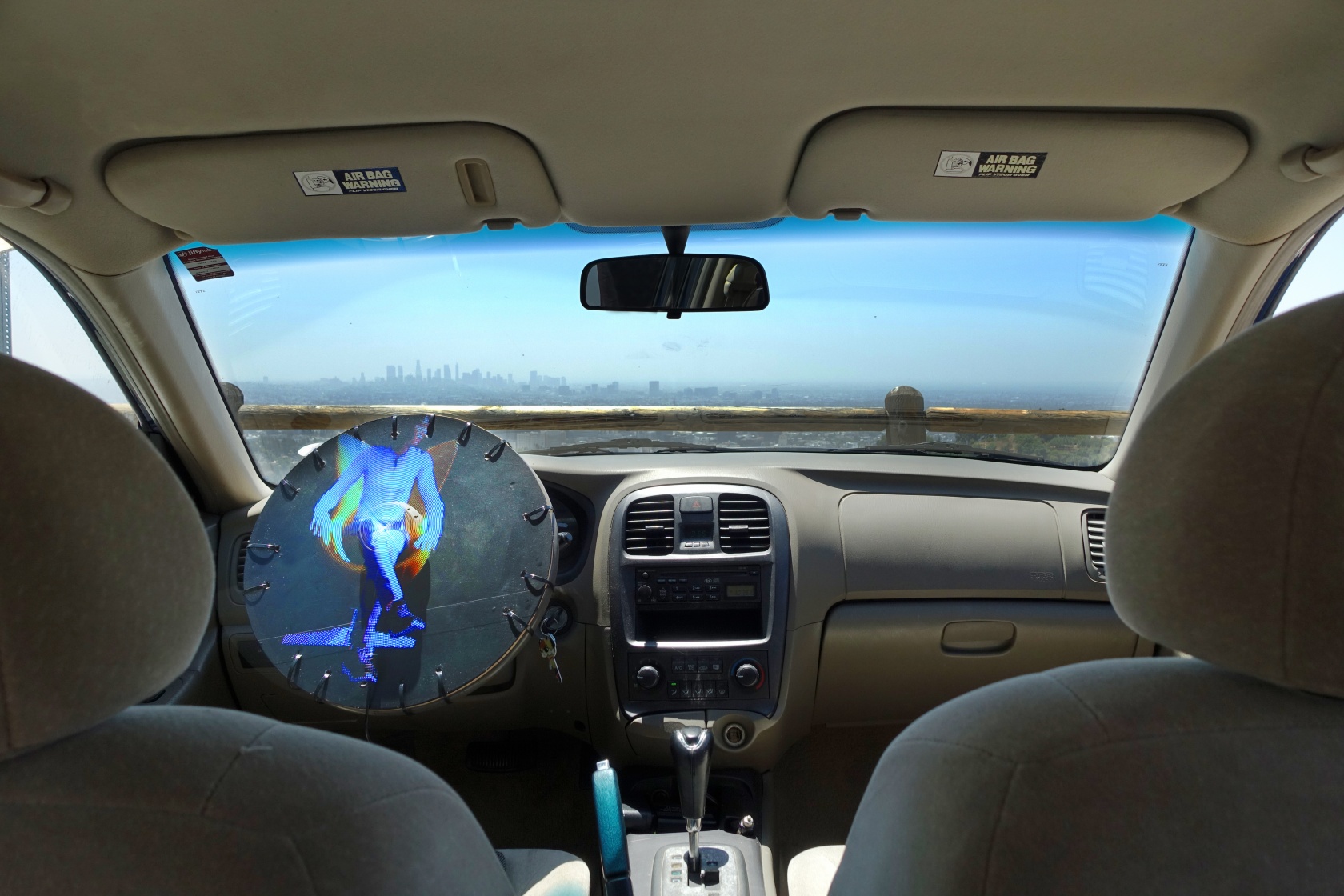Driving to the Future: Shifts in Cultural Ideas of the Car as Art

In the year-long Jason https://naturheilpraxis-hauri.ch/ Rhoades exhibition, DRIVE, now on at Hauser and Wirth’s downtown LA location, audiences are presented with an opportunity to evaluate the car as a cultural object. Iwan Wirth describes Rhoades’s work: “He talks about the future, driving is about the future.” A conversation between Rhoades and Hans Ulrich Obrist from 1998 is projected in the gallery and positions the show at a specific moment in time. A Chevrolet Caprice and Impala, a Ferrari 328 GTS, and a Ligier microcar stand parked in the open gallery while the projection shows Rhoades driving while discussing the nature of cars and art passionately. Rhoades has been described as prescient in his use of cars as a contradictory cultural zone. He viewed cars as sculptural and as a reflection of the self. ‘You are what you drive.’ His work is about the car in LA and the mindspace that comes with the constant forward movement of American traffic. Viewing the work in 2024, it shows a specific cultural moment that alludes to our growing unease with petro-fetishization and the car as an optimistic space. Rhoades’s cars feel hyper specific, with all the idiosyncratic details of American individualism. If his work is about the future, what is the state of our cultural relationship to the car now? Forward looking ideas of the car have become even more complicated for younger artists operating in the context of climate discourse.
A recent LA installation shows a shift in one direction in our relationship to the car. The artist, Rosa Sarholz, installed a piece which is in conversation with LA car culture but as a state of introspection. The work is in a blue 2004 Hyundai Sonata and was shown at an overlook of the Hollywood sign on Mulholland Drive, a spot frequented by tourists. The installation invites passersby to sit in the backseat where they see, on the steering wheel, a 3D hologram fan rendering of a woman in a chair, a voice narration plays over the car speaker. It gives the impression of a dream being described to a therapist. To Sarholz, the woman rendered is an idealized image of a psychoanalyst. The immersive installation gives the feeling of being a child listening from the backseat to information just outside of one’s understanding. Sarholz describes her use of the car as part of her interest in built environments and how they influence our experience. Her work is always site specific and makes use of language as a form. Here she is using the car as the site. Sarholz is interested in how the architecture of the car is paralleled in the architecture of the psyche. Her piece alludes to the car as a complex inward zone, as each seat has cultural specificity. Who’s driving, who’s shotgun, and what is happening in the backseat? Rhoades’s work was about momentum, both literal and figurative, while Sarholz makes us put on the brakes and reflect. It is more indicative of the current moment and generation to view the car with reservation. Fossil fuel consumption has become an explicit locus of strife, overlaying the materiality and sculptural quality of the car with a sinister edge.
Naomi Sam, another artist working with related ideas, had an installation at LA based non-profit Non Plus Ultra. Her installation alters the exterior of a 1996 Toyota Celica, operating in conversation with the rich history of personalization and object obsession within LA car subcultures. Sam’s piece brings to mind Kenny Scharf’s cars. Scharf recently finished his final piece in his KARBOMBZ!™ project. Cars spray painted quickly in Scharf’s signature style are a frequent sight around LA. This sort of irreverent individualism is somewhat of a relic of pop art sensibilities. Sam is interested in the car as a space of social safety but also isolation. She has painted the vehicle in a custom camouflage for the desert, a contemplation of the way the car makes transport through an inhospitable environment possible. Her piece would still stand out as a design object next to unaltered cars, similar to Scharf, but the intentions are not about a reflexive iconography. She thinks of the car as an interface and the windshield as a screen, a visual portal for experiencing the world. To Sam, the car operates as a tool the same way smartphones do, as a sort of intermediary for our perception. As with Sarholz’s piece, Sam’s installation invites viewers to enter the vehicle and experience a projection. In Sam’s case, it is a 3D point cloud rendering of Zabriskie Point in Death Valley. To her, the car can be made an indistinguishable part of our environments but simultaneously continues, through emissions, to make those places more and more hostile to the fragile human body.
Cars in LA culture are cliche at this point, however they come up as a sort of artistic inevitability. The cultural moment can be marked by the different ways the materiality, soical role, and emotional ideas about the car have shifted. We are at a transitional moment in how technology is viewed. The car can absorb these ideas and reflect them back to us. Each of these artists are working in dramatically different spaces, but the car remains ubiquitous as a telling interlocutor.
Written by Elizabeth Howland
Photo by Elizabeth Howland